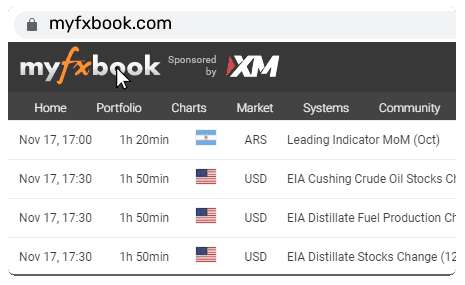Essential Elements of a Trading Plan
In financial trading, having a well-defined trading plan is a crucial factor in helping traders maintain consistency and effectively manage risk. However, many new traders tend to overlook this step, leading to impulsive decision-making and significant losses.
So, what should a trading plan include? Below are key components that every trader should consider.
1. Identifying Your Trading StyleBefore creating a trading plan, traders need to determine a trading style that suits their personality and schedule. Some common trading styles include:
Scalping: Entering and exiting trades within a short period, usually within minutes to hours.Day Trading: Opening and closing trades within the same day, avoiding overnight positions.Swing Trading: Holding positions for several days to weeks, capitalizing on short-term trends.Position Trading: Long-term investing, holding positions for months or even years.Identifying a trading style helps traders select appropriate strategies and avoid inconsistent decision-making.
2. Defining a Clear Trading StrategyA well-structured trading strategy allows traders to enter and exit trades systematically. Key components of a trading strategy include:
Entry criteria: Traders should define trade signals based on technical analysis (RSI, MACD, EMA...) or fundamental analysis (news, economic data).Trading timeframes: Different trading styles suit different timeframes, ranging from M5, H1, H4 to D1.Take Profit and Stop Loss levels: Setting clear Take Profit (TP) and Stop Loss (SL) levels to prevent emotional decision-making.Risk-to-reward ratio (R:R): A solid trading strategy typically maintains a minimum risk-to-reward ratio of 2:1.A trading plan without a clear strategy can cause traders to be swayed by market fluctuations and lose control over their trades.

3. Risk Management – The Most Crucial FactorRisk management is the key to sustaining a trading account over the long term. Some important risk management principles include:
Limiting risk per trade: Traders should not risk more than 1-2% of their capital per trade.Avoiding excessive leverage: High leverage can amplify profits but also significantly increase the risk of losing capital.Always using Stop Loss: Not setting a stop loss is one of the biggest mistakes traders make, potentially leading to account wipeout.Avoiding overtrading: Entering trades too frequently without a clear strategy often results in losses.No matter how strong a trading system is, traders must adhere to risk management principles to safeguard their capital.
4. Controlling Trading PsychologyPsychology is one of the most critical yet challenging aspects of trading. Common psychological states include:
Fear: Causing traders to exit trades too early or hesitate to enter despite strong signals.Greed: Leading traders to hold positions too long or trade excessively large sizes, increasing risk exposure.FOMO (Fear of Missing Out): Encouraging traders to jump into trades when the market has already moved significantly, increasing the likelihood of losses.Following a disciplined approach and sticking to a trading plan can help traders minimize emotional influences and maintain long-term stability.
5. Keeping a Trading JournalA professional trader always keeps a record of their trades to analyze and improve strategies. A trading journal should include:
Trade details (currency pairs, indices, commodities, etc.)Entry and exit timesReason for entry (based on what signals, market conditions)Trade outcome (profit/loss, risk-to-reward ratio, etc.)Notes and lessons learnedMaintaining a trading journal provides traders with a comprehensive view of their performance and helps refine their trading plan to better adapt to market conditions.
ConclusionA well-structured trading plan not only helps traders manage risk effectively but also enhances their trading performance by avoiding undisciplined decisions. If you don’t have a concrete trading plan yet, now is the time to start building one to improve your trading results.
Easytradingol posted:
In financial trading, having a well-defined trading plan is a crucial factor in helping traders maintain consistency and effectively manage risk. However, many new traders tend to overlook this step, leading to impulsive decision-making and significant losses.
So, what should a trading plan include? Below are key components that every trader should consider.
1. Identifying Your Trading StyleBefore creating a trading plan, traders need to determine a trading style that suits their personality and schedule. Some common trading styles include:
Scalping: Entering and exiting trades within a short period, usually within minutes to hours.Day Trading: Opening and closing trades within the same day, avoiding overnight positions.Swing Trading: Holding positions for several days to weeks, capitalizing on short-term trends.Position Trading: Long-term investing, holding positions for months or even years.Identifying a trading style helps traders select appropriate strategies and avoid inconsistent decision-making.
2. Defining a Clear Trading StrategyA well-structured trading strategy allows traders to enter and exit trades systematically. Key components of a trading strategy include:
Entry criteria: Traders should define trade signals based on technical analysis (RSI, MACD, EMA...) or fundamental analysis (news, economic data).Trading timeframes: Different trading styles suit different timeframes, ranging from M5, H1, H4 to D1.Take Profit and Stop Loss levels: Setting clear Take Profit (TP) and Stop Loss (SL) levels to prevent emotional decision-making.Risk-to-reward ratio (R:R): A solid trading strategy typically maintains a minimum risk-to-reward ratio of 2:1.A trading plan without a clear strategy can cause traders to be swayed by market fluctuations and lose control over their trades.
3. Risk Management – The Most Crucial FactorRisk management is the key to sustaining a trading account over the long term. Some important risk management principles include:
Limiting risk per trade: Traders should not risk more than 1-2% of their capital per trade.Avoiding excessive leverage: High leverage can amplify profits but also significantly increase the risk of losing capital.Always using Stop Loss: Not setting a stop loss is one of the biggest mistakes traders make, potentially leading to account wipeout.Avoiding overtrading: Entering trades too frequently without a clear strategy often results in losses.No matter how strong a trading system is, traders must adhere to risk management principles to safeguard their capital.
4. Controlling Trading PsychologyPsychology is one of the most critical yet challenging aspects of trading. Common psychological states include:
Fear: Causing traders to exit trades too early or hesitate to enter despite strong signals.Greed: Leading traders to hold positions too long or trade excessively large sizes, increasing risk exposure.FOMO (Fear of Missing Out): Encouraging traders to jump into trades when the market has already moved significantly, increasing the likelihood of losses.Following a disciplined approach and sticking to a trading plan can help traders minimize emotional influences and maintain long-term stability.
5. Keeping a Trading JournalA professional trader always keeps a record of their trades to analyze and improve strategies. A trading journal should include:
Trade details (currency pairs, indices, commodities, etc.)Entry and exit timesReason for entry (based on what signals, market conditions)Trade outcome (profit/loss, risk-to-reward ratio, etc.)Notes and lessons learnedMaintaining a trading journal provides traders with a comprehensive view of their performance and helps refine their trading plan to better adapt to market conditions.
ConclusionA well-structured trading plan not only helps traders manage risk effectively but also enhances their trading performance by avoiding undisciplined decisions. If you don’t have a concrete trading plan yet, now is the time to start building one to improve your trading results.
I completely agree when you say, ‘A well-structured trading strategy allows traders to enter and exit trades systematically.’ Having a clear entry and exit plan not only reduces impulsive decisions but also helps in staying consistent, especially during volatile market conditions where emotions can take over.













